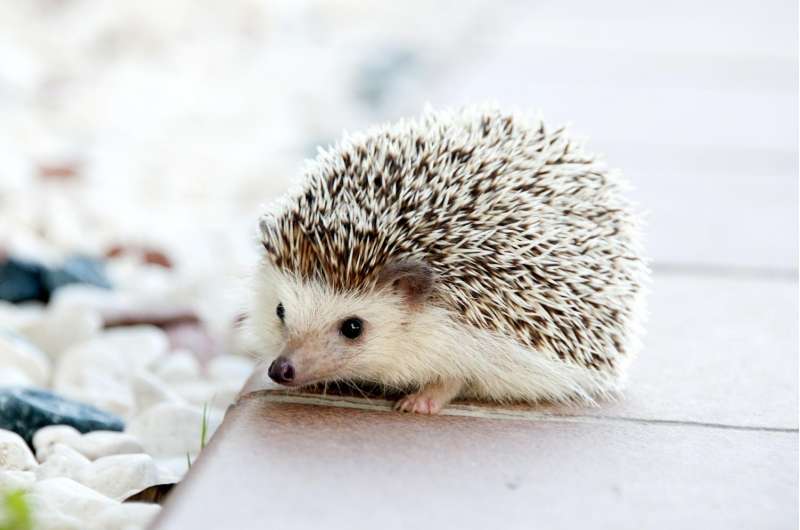Hedgehogs are indeed not so widespread in England any more

There's now more than just anecdotal evidence that England's hedgehog population is feeling the squeeze. In the past 55 years, there has been a moderate decline of up to 7.4 percent in the areas they frequent, says Anouschka Hof of the University of Wisconsin-Madison in the US and Paul Bright, previously of the University of London in the UK. This is after they resampled two sets of data collected by members of the public as part of citizen-science projects. Their findings are published in Springer's European Journal of Wildlife Research.
The West European hedgehog (Erinaceus europaeus) is a common species found widely in the western part of Europe. Conservationists are not yet officially worried about this relatively mobile animal that mainly feeds on slugs, earthworms, beetles and other larger insects. It is classified as "of least concern" on the IUCN's Red List of Threatened Species. However, anecdotal evidence suggests a decline in numbers in, among, others Sweden, the Netherlands and Belgium. Previous studies by Hof and Bright showed that major roads, a lack of connected green spaces and the presence of the Eurasian badger and the red fox can impact hedgehog populations in the UK.
To detect if there is indeed a long-term decline in the abundance and presence of this species, the researchers resampled two sets of data collected as part of citizen-science projects. The one is from the Global Biodiversity Information Facility, and was collected between 1960 and 1975. The other is from the nationwide public participation survey 'HogWatch" conducted between 2000 and 2015 throughout England.
According to Hof and Bright, the West European hedgehog is still found widespread in England, and was noted in 91 percent of the area surveyed through HogWatch. However, a more detailed comparison with the older data set suggests a possible 5 to 7.4 percent decline since the 1960s in the areas where it occurs.
"This suggests that the decline of the relative abundance of West European hedgehogs is moderate in England," says Hof. "It was once a common and more widespread species throughout its range."
Although it does not yet warrant specific conservation concern (this is normally only provided to a species once its numbers decline with 25 percent), Hof and Bright say this decline and the clustering of sightings in specific areas do warrant further investigation. The researchers believe that the West European hedgehog should be regarded as an indicator species of how the environment is deteriorating and should be managed.
"Possible constraints faced by West European hedgehogs might be more severe for less mobile taxa that have to cope with an increasingly fragmented landscape in both rural and urban areas," adds Bright.
Hof and Bright believe that the subsampling of citizen-science datasets is a useful, although not fool proof, tool that can inform conservationists about possible long-term changes in the abundance of particular species.
More information: Anouschka R. Hof et al, Quantifying the long-term decline of the West European hedgehog in England by subsampling citizen-science datasets, European Journal of Wildlife Research (2016). DOI: 10.1007/s10344-016-1013-1
Provided by Springer





















